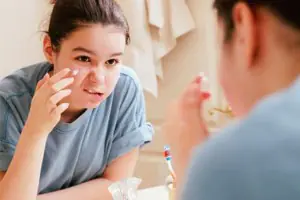
In the life of every teenager, sooner or later there comes a time when acne appears on his face. Trying to get rid of them, both boys and girls begin to fight stubbornly against them, and often make serious mistakes, as a result of which teenage acne becomes a manifestation of a dermatological disease. How to prevent its development and how to get rid of acne on a teenager’s face correctly and without consequences, read the materials in this article.
Why do teenagers get acne on their face?
Teenage acne is quite a serious phenomenon, and it must be treated with full responsibility. Often they can hide serious diseases of the endocrine system, gastrointestinal tract, hormonal disorders, etc.
The skin is penetrated by sebaceous and sweat glands, thanks to which natural thermoregulation occurs in the body. In addition, almost the entire human body is covered with hair and permeated with hair follicles. If the hair follicles or sebaceous glands become inflamed due to various factors, then a pimple or several pimples appear at the site of inflammation. Sometimes a teenager has a cluster of blackheads on his face. This is a consequence of increased production of sebum by the sebaceous glands and blackheads are nothing more than clogged sebaceous glands.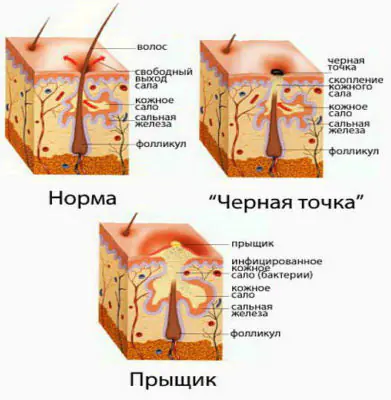
Teenage acne most often occurs on the face, upper back, buttocks, and chest and décolleté areas. If you treat them incorrectly and take care of your skin incorrectly, dark scars and scars may remain in place of acne and it will be almost impossible to get rid of them. Acne is dangerous because it is caused by bacteria that have settled in the skin. Bacteria provoke the development of the inflammatory process. In an inflamed sebaceous duct or hair follicle, bacteria multiply very quickly, the skin turns red, swells and the inflamed area becomes very painful. Gradually, the pimple “ripens” and suppuration forms in the inflamed area, which bursts and the pus comes out, freeing the tissues from infection.
Often teenagers rush things and believe that if they squeeze out an inflamed pimple, they can get rid of it. But in this case the opposite situation arises. In inflamed tissues damaged by external influences, the infection begins to spread and affects other areas. This is how acne occurs.
Under no circumstances should you squeeze pimples! No matter how scary and ugly a pimple is, it needs to be given time to mature. Inside the inflamed area, there is a “fight” of leukocytes with pathogenic organisms. If you interfere with this fight, the infection will spread to the nearest areas of the skin and instead of one pimple, a dozen new rashes will appear on the face.
Causes of teenage acne
We found that acne in adolescents mainly appears due to the development of inflammatory processes in the pores due to increased production of sebum by the endocrine glands. Such changes in the body can be caused by a number of factors characteristic of the transitional age of adolescents.
Hormonal changes in the body
During the transitional period in adolescents, the level of male sex hormones called androgens increases, not only in boys, but also in girls. Hormonal imbalance becomes the main reason for increased sebum production. You may notice that your son or daughter’s skin has become oily (it acquires a characteristic oily sheen), the hair at the roots has become greasy and requires almost daily washing. Pores, when clogged, form either blackheads or inflamed, suppurating areas.
Parents should be very attentive to the problems of their growing children. Along with skin rashes, the child may develop complexes and develop self-doubt. It is important to monitor the psycho-emotional state of the teenager and be ready to lend your shoulder in time. For example, girls, secretly from their parents, can start taking hormonal medications, which, on the one hand, help solve the problem of acne, but on the other hand, can cause irreparable harm to the young body.
During puberty, both boys and girls experience an increase in the number of male sex hormones – androgens. In girls, this process is due to the fact that female sex hormones are formed from androgens. This process will not affect the girl’s figure in any way; she will develop like a woman, but a temporary hormonal imbalance will negatively affect the condition of the teenager’s skin.
Hereditary factor
Parents should pay attention to the fact that if they themselves had problems with their facial skin during puberty, then their child is more likely to have them as well. Therefore, explain to your child how to properly care for his face, how to prevent the spontaneous appearance of acne and pimples, so that by the time hormonal changes begin in his body, he knows how to properly keep his skin clean.
Insufficient or incorrect skin hygiene
Regardless of what gender your child is, he should know and be able to care for his facial skin, especially during adolescence. A teenager should know the stages of skin cleansing, moisturizing and toning. It is strictly forbidden to squeeze pimples; this can lead to the spread of infection throughout the face and cause dermatological diseases. Removal of comedones (blackheads) must be carried out in a beauty salon or at home, observing all the rules and requirements for this procedure.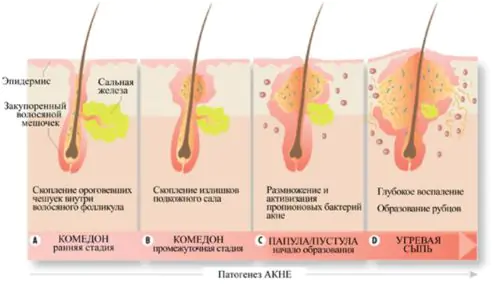
Poor nutrition of a teenager
Many people consider the connection between skin condition and nutrition to be a myth. However, if a child receives food poor in vitamins, or abuses fast food and chips, this leads to impaired digestion, metabolic processes and, as a result, slagging in the body. Toxins have a detrimental effect on the entire body and skin in particular. Looking for a way out, they become a source of bacteria and other pathogens and the cause of acne.
Increased keratinization of the skin
Increased keratinization of the skin is fraught with the fact that dead scales of the epidermis block the exit of the ducts of the sebaceous glands and hair follicles for removing sebum. Sebum is the optimal food for microorganisms that have settled in the sebaceous ducts. As a result of their vital activity, toxins are released that provoke the appearance of inflammatory lesions on the skin.
Nervous tension, stress
Children's nervous tension, fatigue and stress negatively affect their health. In addition to the development of astheno-neurotic syndrome due to stress, the level of androgens in the blood increases in a teenager. Excessive amounts of this hormone causes the sebaceous glands to work harder and produce large amounts of sebum. By clogging pores and glands, it causes skin rashes.
Abuse of sunbathing
There is an opinion among teenagers and some parents that acne is “afraid” of sunlight and tanning helps get rid of it. In fact, after sunbathing, the skin is dry and needs to be cleansed and moisturized, especially in areas most prone to breakouts: the face, chest and upper back.
How to get rid of teenage acne
To effectively deal with teenage acne, you should be patient and follow three simple rules:
- Regularly, several times a day, cleanse your facial skin with special tonics or decoctions.
- Do not squeeze pimples under any circumstances.
- Use cosmetics that slow down sebum production.
Parents often purchase skin care products for their teenage children. There is a rational grain in this, but it is important to ensure that these products are designed specifically for young skin (the packaging may be marked “for problem skin”, “for skin prone to rashes”, “for oily and combination skin”). In addition, if you are purchasing a scrub for a child, make sure that the scrubbing particles will not cause microtrauma to the skin; they should be small, soft, and have a gentle effect.
For each age of a teenager and the degree of skin damage, there are medications that help fight juvenile acne and acne. It is important to be able to determine whether a teenager needs drug treatment or whether the problem can be solved with folk remedies and careful skin care. To do this, it is recommended to conduct a simple test.
Test to determine the extent of skin damage
Carefully examine your child's face and count the number of pimples. Consider even reddened areas where rashes are about to appear.
If there are less than 10 pimples on the face, then your child does not need medical treatment, this is a mild stage of the disease, and with proper skin care, regular cleansing of the face and the use of folk remedies, acne will go away on its own.
If there are 10 to 20 pimples on the face, then the child needs to consult a dermatologist. Perhaps, in addition to observing hygienic requirements and folk remedies, the doctor will prescribe talkatives or lotions for the teenager, which are prepared according to a prescription in specialized pharmacy stores. These products contain zinc, selenium, and copper, which dry out acne and prevent their reappearance.
If a child has more than 20 pimples on his face, then he needs long-term medical treatment. Most likely, the severe stage of the disease was caused by squeezing out pimples and spreading the infection throughout the face and even the body. Before starting treatment, tests will be taken from the child, including demodicosis, and based on the results of these tests, adequate treatment will be prescribed.
Demodicosis – a dermatological disease caused by waste products of the subcutaneous demodex mite, which lives in the layers of the epidermis. It settles in the ducts of the glands and follicles and in the process of its life produces potent toxins. Its danger lies in the fact that, as it moves, it spreads pathogenic microflora to other areas of the skin. Treatment for this condition should be comprehensive and determined only by the attending physician.
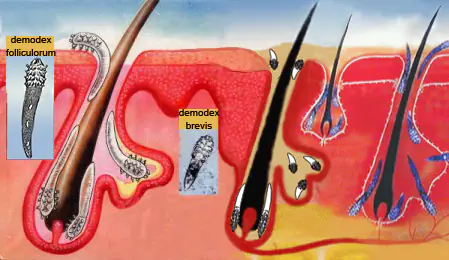
Treatment of acne of the first (mild) stage
This stage is characterized by the presence of up to 10 inflammatory elements on the face. The only correct solution to the problem in this case is proper facial skin care. At this stage of treatment, the goal is to reduce sebum production and remove it from the face.
- For washing, you should choose a special gel marked “for oily and problem skin.”
- After washing, blot your face with a disposable paper towel to avoid the spread of infection and self-infection.
- Lubricate your face with tonic for oily and problem skin. During the morning toilet, the caring procedures should be completed.
- If there are obvious rashes or single pimples on the face, then you can treat them with special agents with antibiotics locally.
At the first stage, acne treatment is carried out only externally. If we take into account that the skin renews itself at a rate of 28 days, then it is necessary to spend at least three renewals on treatment (i.e., carry out treatment procedures for at least 3 months). Only in this case will there be results.
Treatment of acne of the second (middle) stage
Acne makes a person's face unrecognizable and makes a teenager's life unbearable. During the second stage of acne, about 20 foci of inflammation form on the face. When treating this stage of skin disease, a choice should be made towards systemic therapy.
What remains here is regular washing with products for problem skin that do not contain alcohol, and products for external treatment, which are used to treat acne of the first stage. However, treatment is not limited to this and antibacterial therapy is added for administration.
This group of antibiotics includes true antibiotics that fight microbial inflammation. Most often these are drugs of the tetracycline group; the course of treatment is quite long and can last 4-6 months. Doctors recommend using antibiotics in the form of “solutab” - a water-soluble tablet. They dissolve in water and break down into millions of microgranules. When taking the medicinal liquid, the particles are quickly absorbed into the blood and quickly reach the pimples, eliminating their manifestations.
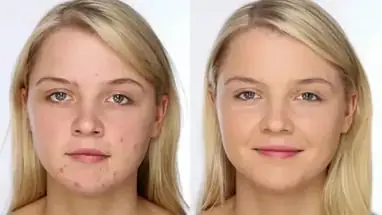
To treat stage 2 teenage acne in girls, drugs that affect the regulation of testosterone are used. These drugs are not suitable for boys. These are true antiandrogens - drugs from the contraceptive group. Mothers are afraid to use such products, but in order to regulate testosterone levels in teenage girls, they use just such products, with the active ingredient “drospirenone”. This therapy is also quite lengthy and is prescribed only by a doctor. The girl takes them throughout adolescence to achieve a lasting effect.
Treatment of acne of the third (severe) stage
Most often, those teenagers who ignored treatment for the first two stages reach the third stage of acne. But there is a group of teenagers who immediately get an aggressive stage of acne.
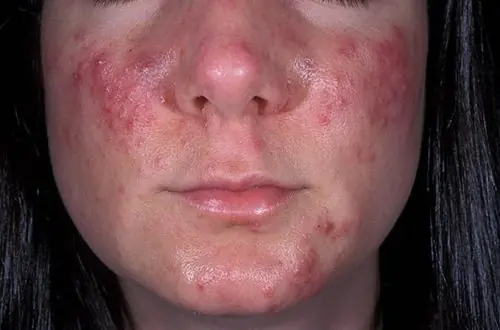
At this stage, there is no talk of local therapy at all. Facial cleansing, the use of scrubs and other cleansers are strictly prohibited. The teenager is prescribed oral administration of a chemical drug with the active ingredient isotretinoin. These are the drugs Roaccutane, Sotret, Acnecutane. To prescribe these drugs (they are prescribed only by a doctor), tests are required: biochemical blood test, because It is important that the activity of liver cells allows the drug to be absorbed by the body. Monitoring and dosage adjustment is required every month throughout the course of treatment.
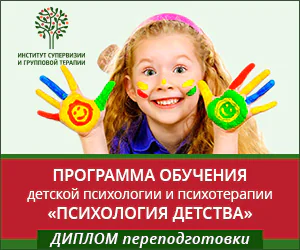
Common mistakes when dealing with teenage acne
Often, when dealing with teenage acne, teenagers make common mistakes. Let's list them and analyze them in more detail.
- Incorrect use of cosmetics.
We already know that one of the causes of teenage acne is excess sebum production. Visually you can see that the teenager’s face is shiny. Struggling with this condition, teenage girls begin to use their mothers' toning products (and some mothers themselves recommend that their daughters powder the excess shine on their skin). However, clogging the skin pores with particles of powder or toning agents only aggravates the problem; the inflamed follicle cannot find a way out and an inflammatory process begins in it, accompanied by suppuration. - Wrong hairstyle. Long, flowing hair always increases the risk of acne spreading.
This point especially applies to teenage boys. Due to some incredible fashion trend, boys stop visiting hairdressing salons and grow long hair. Outwardly, it doesn’t look very good, as if the family is saving the family budget on their child. In addition to untidy, greasy, icicle-like strands of hair, the number of inflamed areas on the face increases due to the constant contact of the latter with inflamed sebaceous glands. As a result, the infection spreads to neighboring ducts, affecting them.
Instead of a conclusion
Acne is a temporary phenomenon, although very unpleasant. But the state of his health and the degree of his self-confidence depend on how attentive you are to your child’s problems, how trusting you build a relationship with him.
See also related articles
6 comments
The dermatologist said that the first step in treating teenage acne is hygiene, and the second is Differin and Metrogyl, and only then come serious medications... How to convince your son to take care of his skin so as to stop at the first stages of treatment? It feels like he doesn't even care about acne.
Good afternoon.
Indeed, to reduce the amount of sebum on the skin, it should be removed, because it clogs pores and leads to the development of inflammation and acne. Show your child medical videos about skin care, go to the doctor together. I am sure that the doctor will be able to convince the teenager of the need for such procedures.
Another remedy known for its anti-inflammatory and soothing properties is aloe juice. For lotion, you can use pure (freshly squeezed) juice or diluted (with water or, for example, potato juice at a ratio of 2:1).
Frankly, all of these home remedies work a little better than nothing at all. Of course, if a single pimple pops up once every six months, you can apply aloe juice. But if there are a lot of rashes, then you cannot do without the help of a dermatologist. We were prescribed a course of vitamins, a diet, and Elon ointment for inflammation of the skin. Super how helpful. The rashes decreased after just a week.
My son started having skin problems and was teased at school. It’s a very unpleasant situation, he treats it harshly. I understand that all this is teenage stuff, but their hormones and emotions are off the charts. I bought him Salicin soap at the pharmacy and a pencil. In the morning and evening, it is obligatory to wash your face and, at home, apply a pencil to the rash itself. I've been using it for two weeks. My skin has become noticeably cleaner, and I don’t think all the acne will disappear soon.
We are suffering from acne on our daughter’s face; she is going through adolescence and undergoing hormonal changes. But it’s not so easy with the choice of funds. Alcohol is almost everywhere, and it is contraindicated in greasiness, because it makes fat cells even more work and store fat, which is dissolved. And not all means are suitable for teenagers, only a few of them. We read a lot, asked questions, consulted, and in the end the choice fell on probiotic cosmetics with bacterial lysates. They normalize the functioning of the sebaceous glands and create an acid-alkaline environment on the skin in which bad bacteria simply cannot develop. We settled on the ProBioDerm series for problem skin from BakZdrav. We've been using it for a month and I'm very pleased. The rashes are less frequent, not as painful, heal faster, do not fester and leave no traces. We took the cream gel and mask. The composition is natural, suitable for teenage children. Wonderful cosmetics, I recommend!
Acne at 13 years old are diagnosed in almost all teenage girls. And here the issue of rejection of one’s appearance due to constant rashes on the face is especially acute.
A girl may withdraw into herself, stop communicating with her peers, and develop a lot of complexes related to her appearance.
During this transitional adolescence, parents should pay as much attention to their children as possible. And they are also simply obliged to help overcome acne.
Specifics of teenage acne at 13 years old
Acne is a developed inflammatory process affecting the sebaceous glands. Doctors call the disease by another word – acne. They can be of very different types and types. And those that “bloom” on the cheeks, forehead or chin at the age of 13 are called ordinary acne.
The first rashes appear at the age of 12–13 and may not go away until the age of 25. The main reason for the appearance of acne at this age is the increased activity of the sebaceous glands, which is associated with changes in hormonal levels.
It all starts with the appearance of comedones. The second name is black dots. They appear mainly on the nose.
When pathogenic microbes that simply adore places where sebum accumulates join this process, infection begins. The microbes themselves do not pose any serious health hazard.
At the age of 13, a child has already developed excellent immunity, which is able to protect against everything bad that the body may encounter. But the pus that forms in the pore is a different story.
Acne at the age of 13 sometimes does not respond even to proven and correct treatment prescribed by a dermatologist. And this is connected with the hormonal processes that occur inside the body. It is impossible to stop the process of growing up. This means that acne will still manifest itself until the hormonal levels return to normal.
Acne on the face of a 13-year-old girl may appear and disappear. However, there is a certain pattern when the number of acne doubles. This:
- Menstruation. A couple of days before it, the number of pimples on the face and other parts of the body may increase significantly.
- Severe stress, which can include an exam, unrequited love, sports competitions, public speaking.
- During the summer months. At this time, the sebaceous glands on the face begin to work especially actively, which means the number of acne increases.
One should not discount genetic predisposition. If there are no obvious reasons, and acne on the face of a 13-year-old teenager covered the entire skin, then a hereditary factor can be assumed.
This is clearly noticeable when mom or dad suffered from severe forms of acne during adolescence.
What is the source
Acne in a 13 year old child appears due to: increased production of sex hormones. Their appearance triggers the formation of an adult. The heart, liver, kidneys, and brain are under stress. But the endocrine glands suffer the most.
Sex hormones are produced in huge quantities. Some even say that in lethal doses. All this leads to increased production of sebum and sweat. Moreover, this secret becomes very thick. And it's hard for him to go outside.
The sebaceous glands become clogged, which leads to the appearance of acne.
If for some reason a girl is also nervous, then other hormones produced by the adrenal glands begin to affect the skin. Well, poor nutrition, passion for shawarma and burgers, chips and sweet soda complete the whole picture. And acne begins to “bloom” all over the face.
Acne on the face of a 13-year-old girl can also appear for another reason - insufficient hygiene or, conversely, too much love for cleansing cosmetics.
The point here is that washing with soap, as well as using lotions, tonics or milk with alcohol dries out the skin too much.
But the body, which is designed very harmoniously, simply cannot allow dry skin. And in response to the appearance of dryness, the sebaceous glands begin to produce even more sebum (their secretion). And it turns out such a vicious circle - the more a girl takes care of her skin, the more acne appears for this reason.
Video: Doctor on treating acne in girls aged 13
Medicines cannot be discounted either. Of course, no girl will voluntarily take this or that medicine. But we are talking here about hormonal drugs that have a contraceptive effect. Of course, at the age of 13 it is still too early to take such medications, but older girls quite successfully practice this type of prevention of unwanted pregnancy.
This also includes steroid drugs, which are often taken by girls involved in sports or fitness on the advice or in secret from the coach.
But there are other factors that include:
- Abundance of cosmetics. Powder, foundation, and blush especially clog the pores.
- Wrong selection of skin care products. A 13-year-old girl should not use cosmetics intended for adult women. This is especially true for creams. They clog the pores and prevent the skin from breathing.
- Injuries. This group includes squeezing out pimples and blackheads yourself. This several times increases the risk of developing infection with microbes, as well as the spread of a purulent rash.
To reduce the number of rashes on the face, each girl should analyze what can trigger their appearance and try to eliminate this factor. And then even hormonal acne associated with growing up will become much less.
Types of acne on the face of a 13-year-old girl
Acne on a 13-year-old girl's face can be very different. And the treatment will depend on what they are. Let's look at the types that are most common.
Comedones – these are black or white dots.
Pustules and papules – these are open or closed ulcers.
Nodular rash is formed from several comedones or papules at once.
Drain affects the deep layers of the skin, is extensive and consists of confluent elements of nodular acne.
Only a dermatologist can accurately determine the type of rash on the face of a 13-year-old girl. Therefore, it is recommended that you and your parents visit this specialist as soon as possible.
Many people ask the question: if acne appears at the age of 13, is this normal? Yes, this is quite a common phenomenon, which you should not worry about, because acne after full puberty most often goes away on its own without any treatment.
Treatment methods
Acne in a 13-year-old teenage girl requires long-term and painstaking treatment. You should not self-medicate, as this can cause complications.
The main thing that mothers, fathers and the girl herself need to understand is that acne does not go away in just a couple of days or even a couple of weeks. Not even the most advertised remedy will give instant action. And to get the effect, you should use only those drugs that can actually help the girl.
The first step is visiting a dermatologist. He will assess the condition of the skin, the extent of the lesion, and most importantly, identify the type of acne. But treatment must be strictly individual. And what helped one girl will not help another. And sometimes it can even make the situation worse.
After the examination, tests are required: blood, stool, for a microbe that could cause inflammation.
In case of severe rash on the face of a 13-year-old girl, antibiotic ointments are prescribed. A mild course does not require the use of strong drugs. Lighter cosmetic products can help here.
How to treat acne at 13 years old
Therapy is carried out in several stages.
- First – reduction in the production of sebaceous glands.
- Second – cleaning pores of fat and dirt that have accumulated in them.
- Third – treatment of inflammation.
- Fourth – skin rehabilitation and reduction of existing defects.
We treat acne on the face at the age of 13 only sequentially. This is the answer to the most important question - what to do to get rid of acne.
Initially, all the mistakes that the girl makes during skin care are eliminated. You should stop washing your face frequently and using soap. During treatment, you need to wash your face with plain water, sometimes you can also use mineral water. And then rinse your face with cool water. Wiping the skin is also canceled. It should dry on its own.
If a girl has acne, her skin needs to be treated twice a day. salicylic alcohol. This remedy helps get rid of accumulated subcutaneous fat. It is recommended to treat your face with a cotton pad moistened with this solution.
Also, the girl should refuse the opportunity to mask acne with foundation, correctors or powder. And you also need to learn to do without makeup.
Nutrition also needs to be reconsidered. It is necessary to give up burgers and shawarma, and replace all fatty foods with fermented milk, fresh vegetables, whole grain bread, and cereals. You will have to give up baking and sweets. It is recommended to season salads with flax oil and include sea fish, poultry and beef in the diet.
If at the age of 13 acne appeared all over the face, then what to do? Sleep should be at least 9 hours a day. If there are stressful situations, you can use mild sedatives.
If acne appears on the body, you need to start wearing clothes only made from natural fabric. No synthetics or semi-synthetics. Multivitamins are also required.
Drugs used
After this, you can begin the second stage of therapy. How to get rid of acne at 13 years old with the help of medications? Mild acne is recommended to be treated with zinc ointment. Apply the ointment to pimples twice a day. The duration of treatment will depend on the recommendation of the dermatologist.
What other ointments can a teenager – a 13-year-old girl – use to treat acne and pimples?
All of them help relieve inflammation, fatty secretions become less thick, and clogged pores are gradually cleared.
The medicine in the form of adapalene cream has a good effect. It will cleanse the pores and relieve inflammation. The ointment should be applied twice a day.
For purulent inflammation, antibiotic ointments are used. The best are considered:
When this is not enough, erythromycin or azithromycin tablets are prescribed at the same time. If the rashes are too severe, you can’t do without hormonal medications.
Hormonal medications cannot be taken without a prescription. They should be recommended by a specialist. In addition to the dermatologist, it is recommended to visit an endocrinologist and gastroenterologist. The latter may prescribe parallel long-term administration of lactofiltrum or bifidumbacterin. Sometimes it can be enterosgel.
The duration of treatment can range from several months to six months.
Alternative Methods
If there are too many acne on the face, and medication therapy does not help, then you can use alternative methods. For a teenage girl of 13 years old this is:
- Cleaning the face using tools or devices.
- Chemical peeling, but it is contraindicated for children.
- Hormone injections into acne.
- Ultraviolet irradiation of the skin.
These treatments can be performed in a beauty salon or clinic. It is contraindicated to carry out procedures on your own.
Medical cosmetics
If you managed to get rid of acne at the age of 13, then in the future you need to maintain clean skin. This will help prevent the appearance of new pimples and ulcers. And medicinal cosmetics can help here.
You cannot select medicinal cosmetics yourself. This can be done by a dermatologist. Most often, a treatment series is recommended for girls of this age "Clean skin" Garnier. Here you can choose gels, scrubs, masks, and foams.
To wash your face, you can also use cosmetic products from the series "Propeller".
If you wish, you can choose a more expensive option - this will be the cosmetics line Nornaderm from Vichy. Another series will be more affordable Advantage from Clean & Clear. It’s impossible not to mention another popular series Ultra by Clearasil.
Among Russian cosmetic lines we can name "Clean line" And "Spring". All of them cost around 100 rubles, but may not have the desired effect.
ethnoscience
They can be considered additional, but not basic. Washing with water with added malic acid or with lemon juice. In this case, the water should be cool.
You can also do honey masks. The skin must be cleansed, warm honey, applied to the face and left for 10 minutes, wash.
Washing is suitable for prevention St. John's wort decoction. You can buy it at any pharmacy. If acne appears on the shoulders and décolleté, it is recommended to add St. John's wort to the bathing water.
For mild acne, for example, only on the forehead, you can try viburnum mask. Mash the berries into a paste, apply to the face and leave for 20 minutes, then wash. If there is no viburnum, they will do strawberries or cranberries.
If your skin is too oily, this will help apple butter. You just need to take the green one, grate it, mix it with the white of a chicken egg and apply it to the skin. Duration of application: 20 minutes, wash.
But it is impossible to remove pimples using traditional methods for severe acne, for example, grade 3 or 4. This requires a professional approach using proven tools.
What not to do
Should I squeeze pimples at 13 or not? This should not be done under any circumstances. This can cause pimples and blackheads to spread to other healthy areas of the body.
Do not use hot water or steam your face when washing your face. In this case, more sebum will be produced than necessary. Yes, and squeezing pimples on steamed skin is prohibited - the risk of developing sepsis increases.
You can't hide pimples under foundation or powder. You can't go to bed without washing your face.
Author - Anna Mikhailova, dermatologist-cosmetologist of the first category, specialist at the Academy of Scientific Beauty. Especially for the site “Treating Acne”.
By the way, you may be interested in other, absolutely FREE, information on how to properly treat acne:
- An effective carrot mask for acne, which can help both teenagers and adults get rid of acne in just the first month of use.
- Acnelocin is a new generation drug that has no analogues yet, which means it will help not only with moderate acne, but also with severe acne.
- And if, in addition to acne, you are tormented by blackheads, which spoil your appearance and cause real complexes, then especially for you we wrote an article “How to remove blackheads on the nose at home.”
- In addition to pimples and blackheads, other imperfections may appear on the skin - papillomas and warts. The easiest way to get rid of them is with the help of Papilight. It not only destroys papillomas on the skin, but also cleanses the blood of the human papilloma virus.
Our readers write
My experience with acne treatment
My name is Mikhail and I want to share with you a unique drug for treating acne. Not so long ago I myself suffered from acne - and I must say, neither I nor my girlfriend liked it.
She persistently tried to cure me with a variety of ointments and gels, tablets and traditional medicine. but nothing worked. It seemed that there would always be more than love between us. We will also be connected by acne. It was very, very unpleasant.
And then somehow my beloved girl, in search of another acne remedy, came across this amazing article on the Internet. Here we talked in detail about such an acne remedy as Acnelocin.
We decided to try it right away - maybe we’d be lucky too. We ordered the drug, received it by mail and began to act.
Surprisingly, I was able to notice the first results within a week! The pimples not only began to decrease in size, they stopped being red, stopped itching and began to literally go away.
My beloved liked it so much that she decided that the course of treatment should be completed completely. And we were right! Only a month has passed and now I have clear skin - not a single pimple, not a single scar or other trouble!
I am very grateful to my girlfriend for literally saving me from acne. It’s so great to look in the mirror and see your face, not acne!
How Inblanc changed my life
Hi all! My name is Marina, I am 23 years old, and I am the mother of a charming daughter. But my motherhood is overshadowed by one unpleasant circumstance - every day in the mirror I see ugly pigment spots on my cheeks and forehead.
I tried everything I could to get them out! I tried both celandine and chamomile, and even signed up for chemical peeling, but thought better of it in time.
And then somehow my husband, quite by accident, came across this amazing article on the Internet, which described milk for the treatment of age spots. And knowing about my problem, without saying anything, I ordered this product.
I received my unexpected gift literally a week later. And on the very first day I smeared the hated spot on my forehead and a couple of spots on my cheeks 5 times a day. I don't think it was much - the hyperpigmentation on my face was too strong.
This went on for a week. And literally on the 10th day from the start of use, it began to seem to me that my spots began to lighten. I immediately questioned my husband, and he confirmed my joy. And to accurately confirm my guess, I went to my friend. And do you know what she said?
- What happened to your spots? They are no longer so noticeable, my dear! Let me try to cure my freckles with this drug!
I showed her website, where I first read about Inblank after my husband ordered it for me. And then we placed an order with her here.
Surprisingly, Inblanc has made my motherhood even more wonderful, and now I am truly happy!
How I got rid of acne
My name is Elena and I am 20 years old. My first pimple appeared at the age of 14 and since then I have learned all the delights of this disease. But for a year now there hasn’t been a single pimple on my face. And the whole secret lies in the unique drug Aknelocin.
If you had seen my face 5 years ago, you would have been simply horrified! There were all kinds of pimples - big and small, they were everywhere. I was ashamed to go out. I was treated with available folk methods - chamomile and celandine. They didn't help as much as I would have liked.
I developed complexes, my mother tried to help me, but the acne didn’t want to go away. It seems that I have already come to terms with my problem. And I even learned to live with acne.
But one day a friend of my mother came to visit us. And seeing the terrible state of my face, I was very surprised that we still haven’t bought an amazing product. She gave us its name - and that’s how I learned about Acnelocin. I read reviews about it and decided to try it.
We were able to purchase the product without any hassle, and at an attractive price. And most importantly, after 2 weeks of daily use, I began to notice that my acne began to not only decrease in size, but also disappear.
As a result, by the end of the full course of treatment there was not a single pimple left on my face. And now for a whole year I don’t know what acne is.
Now I advise all young people with problem skin to use Acnelocin. And even though many people believe that acne can be cured with iodine or brilliant green, only this amazing medicine helped me!
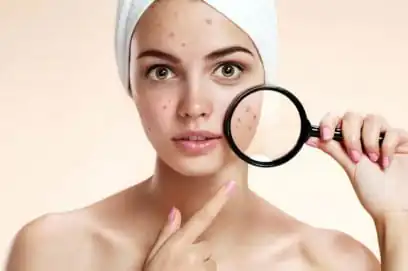
Skin rashes are a problem familiar to people of all ages. However, according to medical statistics, acne appears more often in adolescents than in adults, and most are even perceived as normal, but they, especially if it is not a rare rash, but acne, need to be treated. What is the reason for such unpleasant changes in appearance during adolescence, how to cope with them, and at what age do teenage acne go away?
Why do teenagers get acne?
Doctors strive to remind everyone: any skin rash has a prerequisite in the form of a certain disruption in the functioning of internal organs. Acne, which has become almost synonymous with the word “teenager,” is not an obligatory accompaniment of puberty: some people do not experience serious breakouts at any age. There is also no definite border when they pass. According to experts, acne in a teenager occurs only due to internal failures, which can be provoked by:
- Hormonal imbalance and changes in the body - this problem occupies a leading position in the list of causes of acne. Mostly rashes are formed due to a serious increase in the level of androgens, which disrupts the functioning of the exocrine glands. Increased sebum production ends in clogging of pores.
- Failure to comply with hygiene rules - frequent touching of the face with dirty hands (this area suffers especially actively), using shared towels (an ideal environment for the development of bacteria) or rarely replacing them.
- Incorrectly selected cosmetics and skin care products - the use of too heavy foundations by girls and their subsequent poor removal, the use of products for oily skin on dry skin and vice versa. Here, firstly, the pH of the skin may go astray; secondly, pore clogging is possible (this is especially true for products containing oil).
- An unbalanced diet - any violations in the diet and menu composition affect the condition of the skin, and given the love of teenagers for fast food, carbonated drinks and sweets, rashes become a natural outcome. The liver cannot cope with the volume of work and dirt comes out through the pores.
- Heredity - if parents experienced rashes in adolescence, the chances of their occurrence in children increase.
- Oily skin is a problem that can only be combated by external influences. Its essence lies in the previously described excess production of sebum, which provokes clogging of pores.
- Consequences of drug treatment - if long-term therapy contains antibiotics or hormones, it inevitably puts a strain on the liver, the failure of which affects the condition of the skin.
- Stressful situations - mental instability, which characterizes adolescence, associated with puberty, becomes the cause of hormonal disruptions.
- Skin demodicosis - acne in adolescents can be the result of the activity of skin mites, which can only be combated with medication.
- Vitamin deficiency - vitamin A and representatives of group B, which regulate the functioning of the sebaceous glands, are mainly responsible for the condition of the skin.
Degrees of manifestation
Teenage skin problems may be limited to a couple of small pimples that change location, but are not very disturbing. However, only the lucky few are so lucky - in case of serious internal problems that require a visit to the doctor, this disease can be divided into 4 stages:
- Formation of closed or open comedones (blackheads) in an amount of up to 10 pcs.
- An increase in the number of rashes up to 40, their inflammation, and the formation of pus. Touching may be painful.
- The appearance of scars at the site of some rashes and large ulcers.
- Overgrowth of affected areas (the entire face, back, chest may be affected), bleeding of rashes, formation of cysts/nodules.

Localization of rashes
Mostly acne in a teenager appears on the face, chest and back, although the last 2 areas are affected only in case of serious internal problems. If we talk about the classic restructuring of the body of a healthy teenager, who is faced exclusively with a jump in hormone levels and, as a result, disruption of the endocrine glands, he will see rashes exclusively on the face. However, even here only the nose, cheeks, chin or the entire surface can be affected.
Teenage acne in boys
Young men often experience transient acne, which is characterized by the formation of inflamed nodules that quickly give way to scars. This severe form of the disease mainly affects the face in the forehead and jaw line. With a serious lack of vitamin A, a rash will appear on the chest, and abuse of junk food against the background of chronic diseases of the gastrointestinal tract will make itself felt by pimples on the cheeks and in the triangular area around the mouth.
Acne in a teenage girl
Girls in most cases experience rashes caused by severe hormonal imbalance (in addition to the general increase in androgen levels, we cannot forget about menstrual cycles, which are unstable in adolescents), so acne appears on the chin and nose, in the forehead area. If the rashes affect the entire face or are grouped along the wings of the nose and go further to the cheekbones, there is a high probability of problems with the functioning of the sebaceous glands due to cosmetics.
How to get rid of acne on a teenager's face
Doctors immediately advise girls to forget about decorative cosmetics for the duration of the entire course of treatment, since it aggravates the problem of clogged pores. Even if acne is caused by hormonal imbalance, you need to free your skin as much as possible from negative external interference. The basic scheme for eliminating acne in a teenager looks like this:
- diagnosing the problem;
- correction of diet;
- local and internal use of medications;
- cosmetic procedures for cleansing the skin and normalizing pH.
Special diets for acne
Forget about sugary soda, packaged juices, hamburgers and fried potatoes - the first thing a teenager needs to do when faced with acne. Even a week without harmful products will help you see positive changes, but completely getting rid of the aesthetic defect will require patience: normalization of the gastrointestinal tract and liver may take several months. The menu should definitely include a large amount of fresh vegetables, dairy products, lean protein, but no strict diets.
Cosmetology procedures
Facial cleansing in a salon, if acne is caused not by oily skin, but by internal failures, will not give much results. Masks, foams, scrubs and other products that are used at home will also work only if there are no health problems. However, as an addition to the main therapy, salon procedures may be recommended:
- mechanical cleaning;
- darsonvalization;
- laser treatment;
- cryomassage.
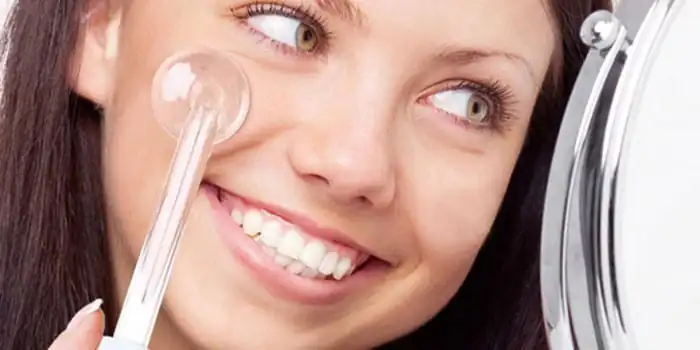
Drug treatment of acne in adolescents
Pharmaceutical preparations can be used internally and externally; acne therapy mainly involves both options. Taking pills is practiced for hormonal imbalances, disturbances in the gastrointestinal tract, and central nervous system. Most of the causes of acne can be dealt with through local treatment, for which creams, ointments, gels, solutions and tinctures used for washing, rubbing the skin, and compresses will be used.
Folk recipes
For acne, alternative medicine can be effective and can compete with pharmaceutical drugs. Herbal infusions are used internally and externally: they are used to make infusions and decoctions for washing, they are drunk to normalize the functioning of the gastrointestinal tract and liver, and general cleansing of the body. The only thing that folk remedies do not cope well with is hormonal imbalances, which may require serious medical intervention.
Which doctor should I contact?
If acne in a teenager is not a mild rash, but is characterized by the formation of large blackheads, leaving behind depressions and local redness, you need to consult a dermatologist. A cosmetologist in a salon will not help you - you need a doctor. Afterwards, depending on the exact cause of the rash, visits to a gastroenterologist, neurologist, endocrinologist or even a nutritionist are not excluded.
How to treat acne on the face in teenagers
To restore the cleanliness of the face, tablets and topical products must be selected especially carefully, since the skin here is very sensitive, it is easy to dry it out or leave a burn on it. The general selection of drugs (internally and externally) that can be used to treat acne in a teenager should be carried out by a doctor. He can write:
- antibiotics;
- hormonal agents;
- retinoids;
- vitamins;
- adsorbents.
Pharmacy products
Local use of drugs presented in pharmacy windows makes sense for any reason for the appearance of skin rashes, but they are selected individually. Mostly such drugs have anti-inflammatory and antiseptic properties. Doctors especially recommend:
- Salicylic ointment - applied locally in a thick layer up to 3 times a day. The drug is very effective, but cannot be used on large areas because it dries out the skin.
- Hydrogen peroxide – 3% concentration dries inflamed areas well and kills bacteria; can be used alone or as part of homemade masks. Mix it with cool water (1:10) and the resulting tonic should be used to wipe the acne daily.
- Zinc ointment - has a strong bactericidal effect and can affect rashes caused by a dermatological disease. Apply up to 6 times a day to cleansed skin.
- Sulfur ointment is known for its anti-inflammatory and antiseptic qualities, affects the sebaceous glands, and can fight demodex. Apply up to 3 times a day in a thin layer, wash off after 4 hours.
- Tar soap is suitable only for those who are haunted by a constant oily sheen, since tar is very drying. You need to wash your face with soap every night before going to bed.
- Brewer's yeast - helps normalize metabolic processes; acne in a teenager alone will not be cured. The powder is diluted with milk (5 tbsp per 50 ml), applied in the form of compresses or masks for half an hour.
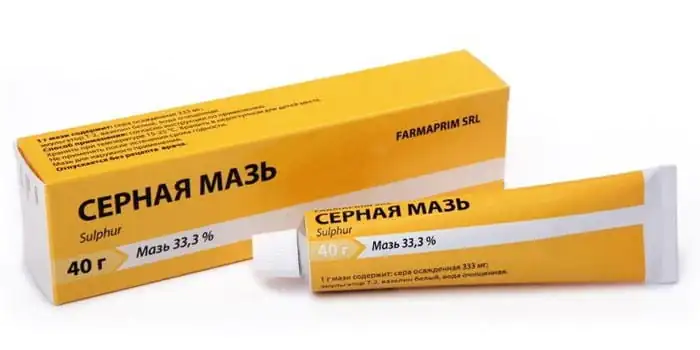
Pills for facial acne for teenagers
The internal use of medications in such a situation must be agreed with a doctor, since a teenager may even be prescribed antibiotics for skin problems if the rash affects a large area. Retinoids affect the production of sebum, but they also have a lot of side effects, so self-medication with them is unacceptable. Safer cleansing preparations:
- Polysorb - removes toxins, so it helps cleanse the skin if acne in teenagers is caused by disruptions in the gastrointestinal tract. The drug can be used externally, making masks (diluted with a small amount of warm water to make a paste), or drunk for a week.
- Lactofiltrum - often used with Bifidumbacterin, the principle of action is similar to Polysorb, but is used only internally.
- Polyphepan is one of the highest quality means for cleansing the body; it is used internally in a course lasting a week.
Teen skin care cosmetics
Transitional age requires the use of cleansing cosmetic products: daily care must involve the removal of dead epidermal cells through washing. Additionally, exposure to antibacterial agents that affect the functioning of the sebaceous glands is possible. Experts recommend:
- Tonics/lotions – Propeller, Clerasil, Vichy.
- Gels (often with AHA acids) – Garnier, Keracnyl, Clean&Clear.
- Creams – Skinoren, Aknestop, Baziron. Among the non-pharmacy ones, we can highlight Clerasil, Proactive.
Folk remedies for teenage acne
Supporters of alternative medicine propose to use whatever plants to influence rashes in adolescents - they are treated with aloe leaves, chamomile flowers, St. John's wort stems and even celandine. All of the remedies listed below are used exclusively locally and they only work externally, so they are useless for hormonal problems and digestive system problems.
Acne powder
Even with a wide range of cosmetics that help get rid of teenage acne on the face, the most effective is a simple mash consisting of 90% alcohol (50 ml) mixed with a 2% solution of salicylic acid (5 ml), boric acid ( 50 ml) and a tablet of chloramphenicol. The resulting mixture is used for wiping the face in the evening until acne in teenagers is completely eliminated.
Aloe infusion
Anti-inflammatory, antibacterial, antipruritic – these are the properties of aloe that make it an excellent assistant in the fight against skin problems. A simple water tincture is the safest home remedy to use on rash areas morning and evening. The infusion is prepared as follows:
- Grind fresh aloe leaves (5 pcs.).
- Pour boiling water (200 ml).
- Let stand for 20 minutes.
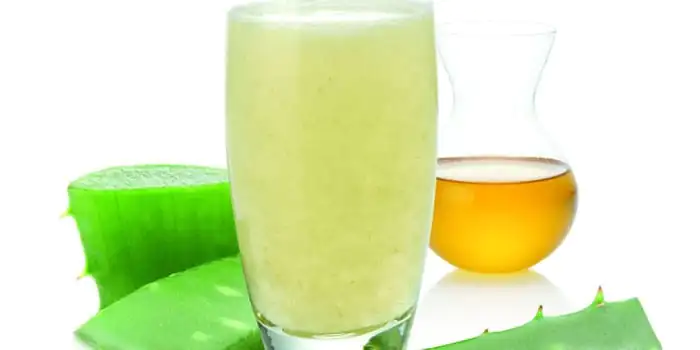
Calendula and chamomile lotion
For daily washing, teenagers are recommended to use a homemade lotion made from chamomile and calendula flowers. They are taken in equal proportions to make 2 tbsp. l. raw materials, and pour a glass of boiling water. After half an hour, the liquid is filtered, 2 aspirin tablets are diluted in it and the resulting product is treated with cleansed skin in the evening. The recipe is effective, but only for complex therapy and will not help with late stage acne.
St. John's wort oil
Even if a teenager’s skin tends to be oily, the rashes can be treated with St. John’s wort oil. This remedy is available in pharmacies, but it is better to prepare it yourself. To do this, dry St. John's wort is poured with sunflower oil (100 g per 500 ml) and left for 3 weeks. The resulting product, without filtering, should be lubricated on problem areas in the evening, after washing. An alternative use is to apply a thick layer as a mask for half an hour, 2 times a week.
Mask with celandine
The poison contained in celandine juice has antiseptic qualities, so if used carefully, this plant will quickly help teenagers cope with any skin rashes. For the mask 2 tbsp. l. raw materials are poured into 0.5 liters of boiling water and left for 24 hours. Then add a teaspoon of honey and egg white to 20 ml of liquid, spread the mixture over the face and leave for 10 minutes. The procedure is done 2 times a week.
What not to do about acne as a teenager
Most teenagers, who are embarrassed by the appearance of rashes on the face and other open areas of the body, try to get rid of them as soon as possible, and this often ends in attempts to squeeze out blackheads or acne. Doctors remind: this can cause infection or cause scarring. A few more important “don’ts”:
- If you don’t wash your face every hour, you will lower your pH and destroy the protective fat layer.
- Do not apply a large amount of cosmetics - there is no point in covering up blackheads and acne: they are visible, but this slows down the treatment.
- Do not use hot water for washing - the functioning of the sebaceous glands will be disrupted.
Video



